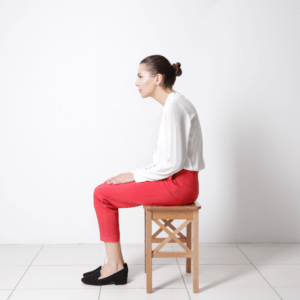Lifestyle Changes to Promote Healthy Bones
Why is the health of your bones extremely important? Well, your bones play a vital role in your body. Not only do they provide structure; they protect your organs, anchor your muscles, and store calcium which is crucial for healthy bones.
Your bones are continuously restoring, new bone is made, and old bone is broken down all the time.
During our younger 🧒 years, our bodies make new bone much faster than it breaks down old bone. This means that bone mass increases ⬆ quite quickly, with peak bone mass happened at around 30 years of age. After then, as we age, bone mass decreases ⬇ and you the risk to develop complications such as osteoporosis, and an increased chance of breaking bones from a fall becomes greater.
Here are our top tips for improving bone health at any stage of life.
Your Diet Is Important
A healthy 🥑 and balanced ⚖ diet is the best way to build and maintain healthy bones from an early age and throughout your life. Vitamins and minerals such as calcium and vitamin D are essential to bone health and can be easily absorbed from the foods you eat.
You should aim to get around 700mg of calcium in your diet per day. Good sources of calcium include:
- Sardines and pilchards 🐟
- Anything made with fortified flour such as bread 🍞
- Nuts 🥜
- Plant-based drinks such as soya milk 🥛
- Tofu 🍽
- Soya beans 🌿
- Green leafy veggies such as broccoli, cabbage, and okra 🥬
- Cheese, including cottage cheese, and other dairy 🧀
You need around 10 micrograms of vitamin D per day to maintain bone health. However, it can be difficult to get all the vitamin D you need through food sources as we get most of our vitamin D through sunlight. It may be worthwhile to take a vitamin D supplement during colder months 🥶, but you should speak to your healthcare provider about this before you start taking one.
Exercise Helps
Your body needs encouragement to break down and rebuild your bones. Exercise is the best way to build a stronger skeleton 🏃️. Walking️, jogging, and light aerobic exercises make your bones and muscles work against gravity, which strengthens them naturally. Weight-bearing ️exercise is also essential to build and maintain bone mass, so resistance or strength training, is helpful here 🏋.
We often speak about how it’s important to strengthen your core. This is mostly because your spine needs the support of your core to help it function at its best. Improving your core strength through abdominal exercises, lower back exercises, yoga️, Pilates, or even tai chi can help you develop a stronger core 💪.
If you have any health conditions or have been advised that you are at risk for osteoporosis, it’s best to check with your doctor 🩺 first before attempting a new exercise regime.
Other Things That Affect Bone Health
Other than the lifestyle changes mentioned above, there are a variety of other factors that affect the health of your bones.
- Tobacco 🚬 and alcohol 🍷 use can contribute to weaker bones.
- If you are a woman, you have a higher risk of osteoporosis because women have less bone tissue than men.
- If you are underweight or have a small frame, you have less bone mass to draw from as you age.
- If your thyroid releases too many hormones, you may be at risk of bone loss..
- Eating disorders such as severely restricting food intake can cause loss of bone mass.
- Certain medications such as cortisone can damage your bone health.
- Women lose bone more rapidly during menopause.
As we age, it becomes increasingly important to care for our bones to help them to regenerate and keep them strong 💪, particularly if we want to avoid conditions such as osteoporosis or even the heightened risk of breaking bones. Lifestyle changes such as eating a more balanced diet and getting more exercise can make a big difference in promoting the regeneration of bones and maintaining bone mass 🦴.
Do Less Of This
Other than preventing exposure to light, there are a few other things you should avoid when trying to get a good night’s rest.
- Try not to consume caffeine from about six hours before your bedtime. Caffeine stimulates your nervous system and may stop your body from naturally relaxing at night. ☕
- If possible, try to reduce long daytime naps 😴. Shorter power naps are beneficial, but long or irregular napping during the day can confuse your internal clock making it difficult to fall asleep at night.
It’s best not to exercise right before going to sleep 🏋. Some light stretching before bed is fantastic and has many health benefits, but strenuous activities before bed can cause sleep problems as it increases alertness.
Do More Of This
On a more positive note, let’s talk about the things you should be doing more of to achieve a good night’s rest.
- Shortly before you plan on falling asleep, do something that relaxes you ☺. Whether that is taking a bath 🛀, reading a good book 📖, stretching ️, or deep breathing. The more relaxed you are before arriving in ‘lala land’, the better the quality of your sleep will be.
- Make sure you’re sleeping on the right pillow and mattress 🛏. The best pillow and mattress for you will differ depending on the position you typically sleep in. You can find out more about selecting the right pillow and mattress for your needs here.
- We know this may be easier said than done but do try and eliminate worrisome thoughts you want high quality sleep. Something that may help you do this is journaling ✍. Even just writing down your worries before bed can make your load feel lighter.
We hope these tips have given you some ideas as to how you can improve the quality of sleep you are getting so that you can reap the rewards 🙌. With seven to eight hours of high-quality sleep, you should wake up feeling refreshed 🤩 and ready to tackle the day ahead.
Did you know that having chiropractic or massage care can improve the quality of your sleep? To book an appointment and to learn more, use the button below 👇 to make contact.





